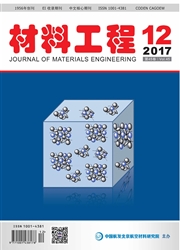

 中文摘要:
中文摘要:
对第二代镍基单晶高温合金进行表面处理并在1000~1200℃保温,研究表面加工工艺和热处理条件对胞状再结晶行为的影响。结果表明:磨削、吹砂、喷丸试样热处理后表面均发生了胞状再结晶,其生成厚度依次增加。喷丸试样经1200℃/50h后胞状再结晶区厚度可达0.1mm,晶团之间及与基体之间存在取向差小于5°的小角晶界和35~45°的大角晶界。热处理温度比保温时间对胞状再结晶区生长速率和最终厚度的影响更加显著。
 英文摘要:
英文摘要:
The effects of surface processing and heat treatment conditions on cellular recrystallization behaviors were investigated in a 2nd generation Ni-base single crystal superalloy after different surface treatment and then heat treating at 1000-1200℃ under vacuum condition.The results indicated that the cellular microstructure after heat treatment was observed in all specimens and the thickness of cellular recrystallization zone increased with the surface processing of grinding,grit blasting and shot penning,respectively.The thickness of the cellular layer was up to 0.1mm in shot penning samples after heat treating at 1200℃ for 50h.And low-angle boundaries lower than 5° and high-angle boundaries within the range of 35-45° for misoriented angles existed not only between different cellular colonies,but also between the cellular recrystallization zone and the substrate.In addition,the heat treatment temperature played a more significant role than the holding time in the change of growth rate and layer thickness for the cellular recrystallization.
 同期刊论文项目
同期刊论文项目
 同项目期刊论文
同项目期刊论文
 期刊信息
期刊信息
